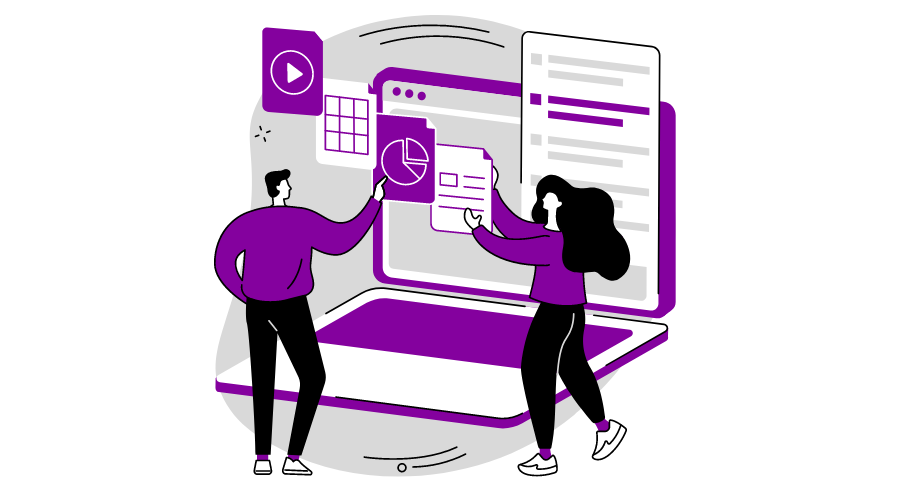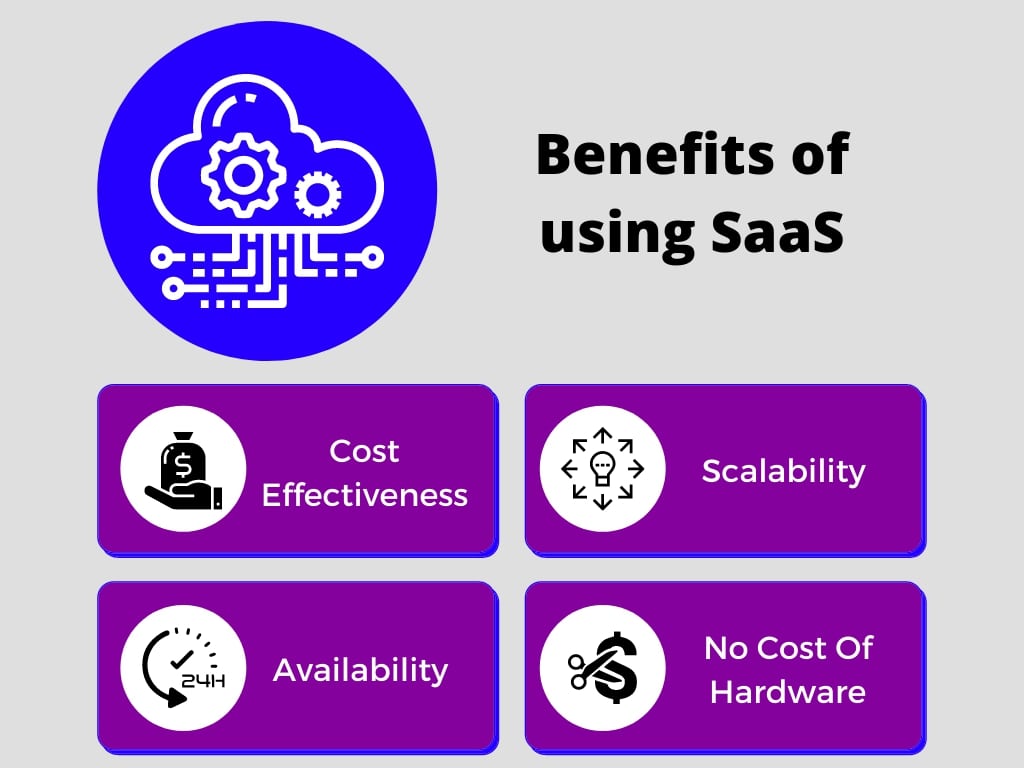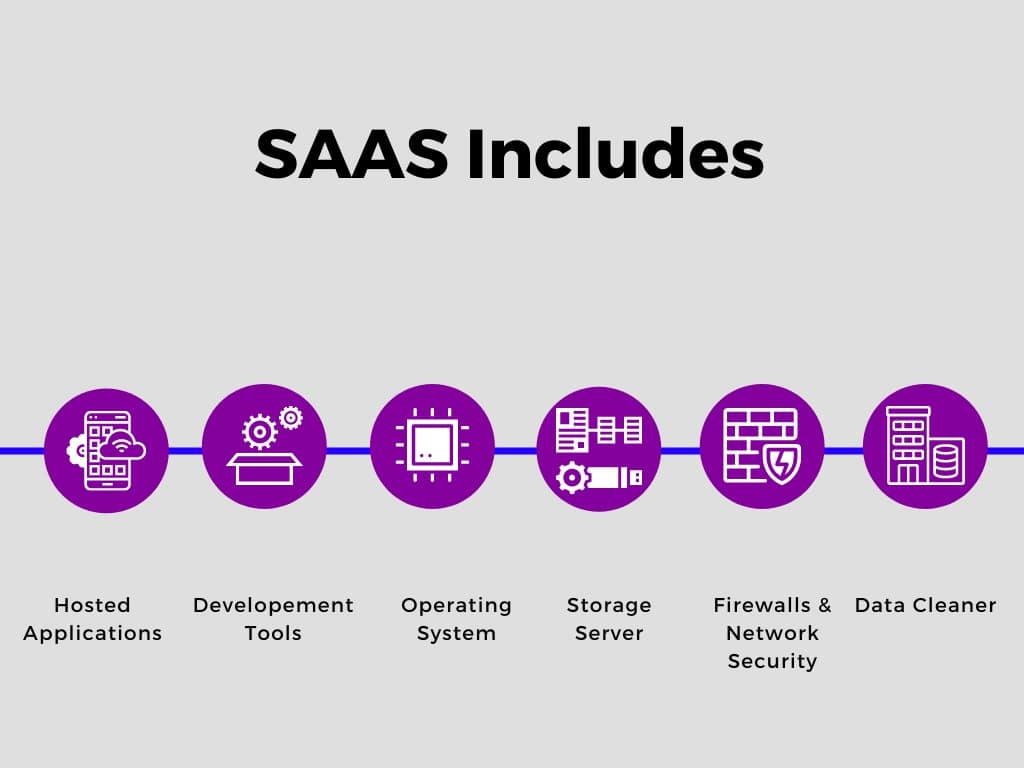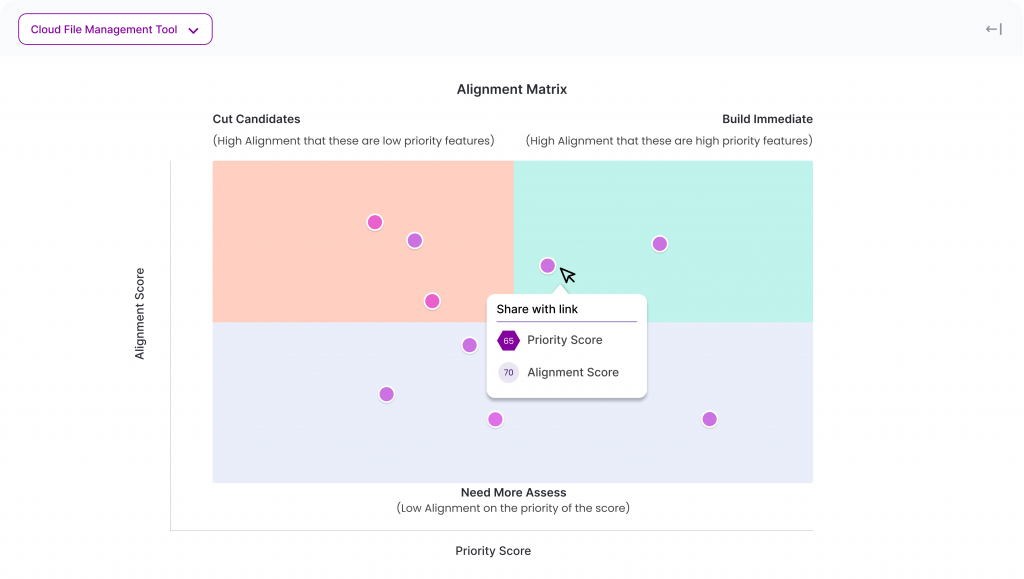SaaS Product Management – Stages & Strategies

What Is SaaS Product Management?
Software as a service (SaaS) product management is defined as the process of developing, maintaining and commercializing a software product that is hosted on dedicated servers (on the internet) and accessed via desktop, web or mobile apps.
Common examples of consumer SaaS products are Salesforce, Microsoft Office 365, Workday, etc.
SaaS product development has some advantages over offline software, such as cloud product updates, continuous integration with newer platforms, and easier installations. However, since such a product is completely hosted online, it also leaves them more open to cyber attacks, which means greater investments are needed for data and network security.

SaaS product development is similar to any typical development of a product, however, it does offer its own unique benefits and challenges. Let’s look at a typical SaaS product development process stages:
Stage 1: Software/Website Concept
This is where a SaaS product is conceived based on ideation and competitor analysis.
At this stage the product only has a functional shape, that is, what it is intended to do and who can potentially use it with substantial value-addition to what they may be currently using.
Stage 2: Market Demand and Cost Feasibility Study
Market research and demand understanding is key to ensure that your initial estimate is correct – that the product actually will have a substantial customer demand base to actually market to and see a profit on the product.

The product feasibility study indicates a price-to-feature model reality – that is, how much are people willing to pay for a feature in the product, cost needed to funnel such a product, and the ROI expected from its sale.
All three – short, medium, and long-term estimates on market penetration of the SaaS product will need to be drawn. Research is not just limited to consumer research. It should also include competitive analysis of existing products for features and pricing.
Stage 3: Resourcing, Tech Stack, and Team Alignment
The next stage, once your product and market research is complete, now you will need to bring together the team and technologies needed to make it a reality. This includes identifying the right talent as well as the right technology-stack to complement their skills.
Invest time in ensuring team alignment on product objectives- what to build, who is expected to use it and benchmarks for metrics.
Stage 4. Wireframing, UX mapping, and UI designing
Wireframing of the product concept is the first manifestation. Without a wireframe, more time gets wasted in creating and rejecting product designs.
A wireframe essentially serves as a minimal-cost ideation tool till the team agrees on the right wireframe to begin the actual design work.
It is based on this initial design that the user experience map, individual screens and interfaces will be designed – only then will developers be able to replicate the design with underlying functionality.
Stage 5. Product Development
Once the product designs are ready, the development/engineering team can begin executing the design and building the functionalities. This includes alignment on server capacity, caching and other DevOps related back-end alignment as well.
The product manager typically works with both the DevOps and engineering teams to ensure that the actual product and the cloud platform intended to host it are fully compatible and in-sync.
Stage 6. Testing
In this stage, a fully hosted product is tested on the cloud. Sometimes an individual feature may be tested in a staging environment. However, this is not a final confirmation.
The SaaS product and all its functions must be tested in its final condition as it is presented and used by consumers of the product.
Testing is also not a one-time event; it happens in every micro-stage while a product is being developed in parts before they are assembled and tested for full functionality.
Stage 7. Go-to-Market Plan Execution
Once a product is approaching readiness to be made available to potential consumers, your go-to-market plan needs to be executed. This means pre-launch branding, product demo videos and screenshots, product-use experience videos, website and promo channels.

5 Key Strategies for Effective SaaS Product Management in 2021
Customer Centric Feature-Development
A customer centric feature development process puts the needs of the customers before commercial/profit margin goals.
The theorem being that if you create customer centric features, you get a customer centric product that caters to existing demand rather than creating demand for a feature that has not been backed up by customer need analysis.
Customer centric market studies and feedback from existing users of competitors is also the path to identifying and understanding pent-up demand for features that don’t exist among consumers.
Intuitive UX and DIY
Best user experience is delivered by a product which doesn’t need a UI manual. In other words, SaaS product design needs to be intuitive in it’s features and functionality discovery and usage. This is particularly important for B2C products which are used en masse and you simply won’t have the bandwidth, budget or ROI to explain the product to every consumer
In turn, invest in UX and UI designers who have a grasp on user psychology, in real user tests and customer feedback of the individual features and product at large.
‘Organic’ Demand Generation
Organic demand generation is the process of investing in non-paid lead generation sources for your product. This includes any informative content on the internet that automatically generates leads for your product. These include search engine ranking articles posted on your website, social media posts, workshops, and informative webinars.
Since SaaS product users are online, digital demand generation is the key platform for marketing. And online is also the most ‘free’ and organic compared to offline and traditional media.
Identifying in-demand keywords/search queries and investing in curating long and informative content that interested readers can ‘find’ through search engines and social media searches is the most common approach.
Another approach, which requires shorter content but more speed is news-worthy content, where demand in the domain of the product needs to be identified regularly tapped into while the topic lasts in the news cycle.
Feedback Driven Feature Updates/Additions
Just like features should be developed based on potential user needs; they should also be upgraded based on customer feedback who have already used your product.
One of the best strategies for planning product updates is identifying and prioritizing them based on customer feedback. This way, not only are you satisfying an existing customer and giving them more reason to stick with your product, you are adding an update not based on intuition but verification from a market user and a customer.
Invest in Team Collaboration and Alignment Tech
Team-wide and clear alignment on product design, features, coding languages, developmental methodologies, go-to-market plan, target audience, key USPs, and post-launch product plans – is key to product management success.

Another key and major pro tip to successfully manage the product is to get access to the top product management software.
Problems in alignment lead to product/feature launch delays, low market visibility, and ultimately lower sales for the product.
By aligning your team around the needs of product development, marketing and sales – and how it affects every team member’s success and job, is key to ensuring a healthy, independent yet co-responsible team that understands the big picture of the team’s goal at large.
Alignment of the team is needed even more in SaaS software products – because it is a live product. If errors go live, they are live for all users and not just new buyers.
